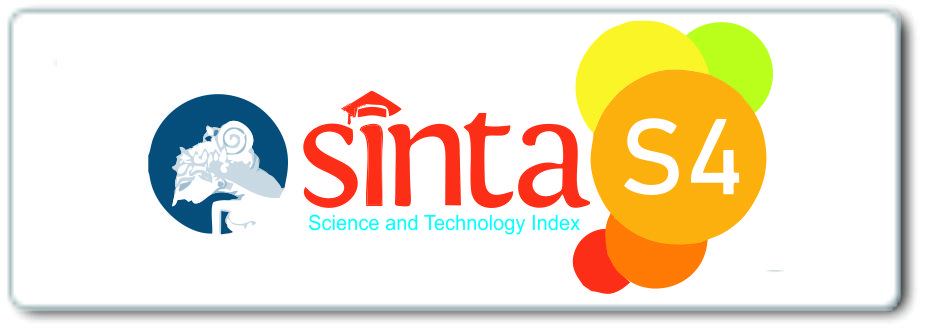CORRELATION STUDY OF NUTRITIONAL STATUS OF FEMALE 16-18 YEARS OLD WITH PREMENSTRUAL SYNDROME
DOI:
https://doi.org/10.29082/IJNMS/2022/Vol6/Iss2/398Abstract
ABSTRAK
Premenstrual Syndrome was an increase in emotional tension and it was a factor that usually starts one week to a few days before the onset of menstruation and disappears after menstruation comes, although sometimes it continued until menstruation stops. Premenstrual Syndrome was influenced by several factors, including nutritional status. From this observation, it was found that there are still many women who experience Premenstrual Syndrome (60%). This study aims to analyse the relationship between the nutritional status of female16-18 years with the incidence of premenstrual syndrome in Sooko Village - Mojokerto.
This study used observational analytical research methods. With a population of 50 and a sample of 40 respondents using simple random sampling, data obtained from young women who experienced and did not experience Premenstrual Syndrome were processed by frequency tabulation and then analysed by contingency coefficient test using SPSS.
Based on the results of the study, it was found that 23 students (57.5%) had Premenstrual Syndrome with normal nutritional status, while 11 students with underweight nutritional status, of which 9 students (27.5%) had premenstrual syndrome. Then from the results of the Contingency Coefficient Test, it is known that there is a relationship between the nutritional status of female16-18 years old with the incidence of premenstrual syndrome with a value of sig = 0.000. So it can be concluded that students who have underweight nutritional status have the most premenstrual syndrome and will reduce or disappear by improving nutritional intake in a balanced manner. Meanwhile, those who have normal nutritional status also continue to experience Premenstrual Syndrome because their age 16-18 years old is included in the age category of high risk of developing Premenstrual Syndrome.
From the results of the research above, it is expected to be able to develop conceptual insight in providing Health Education to young women so that they do not experience severe premenstrual syndrome.
Keywords: Nutritional status, female 16-18 years old, Premenstrual Syndrome
Downloads
References
Baliwati, Y. 2004. Introduction to Food and Nutrition. Jakarta: Self-Help Spreader
Derek, L. 2005. Every Woman. Publication Delapratasa.
Derek, L. 2002. Fundamentals of Obstetrics & Gynecology. Jakarta : Hippocrates
Djaeni, A. 2000. Nutrition Science. Jakarta: Dian Rakyat.
Hurlock, E. 1998. Developmental psychology. Jakarta : Erlangga.
Julie. 2008. Beautifully Created. Yogyakarta. Immanuel's protégé (Andi).
Kartono, K. 2006. Psychology of Women Volume 1. Bandung: Mandar Maju
Kasdu, D. 2005. Solutions to Women's Problems. Jakarta: Puspa Swara.
Nursing: Thesis Guidelines, Thesis and Research Instruments
Nursing. Jakarta: Salemba Medika.
Kissanti. 2008. Women's Smart Book. Araska.
Matraadisoebrata, D. 2005. Social Obstetrics & Gynecology : Sarwono Prawirohardjo Bina Pustaka Foundation
Nettina, S. 2002. Nursing Practice Guidelines. Jakarta : EGC.
Nursalam, 2008. Concept and Application of Science Research Methodology.
path. 2004. Nutrition in Reproductive Health. Jakarta : EGC
Sarwono, S. 2004. Adolescent Psychology. Jakarta : Raja Grafindo Persada
Setiadi. 2007. Concepts and Writing of Nursing Research. Yogyakarta. Graha Ilmu.
Supariasa. 2001. Assessment of Nutritional Status. Jakarta : EGC.
Wikjosastro. 2005. Gynecology. Jakarta : Bina Pustaka
http://dokterlilien.com/blog/may4,2008/12:10:11am
http://id.wikipedia.org./wiki/sidrom_pramenstruasi/11/4/2008/11:11:16
Downloads
Published
Issue
Section
License
Authors who publish with IJNMS agree to the following terms
- Authors retain copyright licensed under a Creative Commons Attribution-ShareAlike 4.0 International License that allows others to share the work non-commercially with an acknowledgement of the work's authorship and initial publication in this journal.
- Authors are permitted and encouraged to post their work online (e.g., in institutional repositories or on their website) prior to and during the submission process, as it can lead to productive exchanges, as well as earlier and greater citation of published work (See The Effect of Open Access). Authors can archive pre-print and post-print or publisher's version/PDF.









_IJNMS.png)






